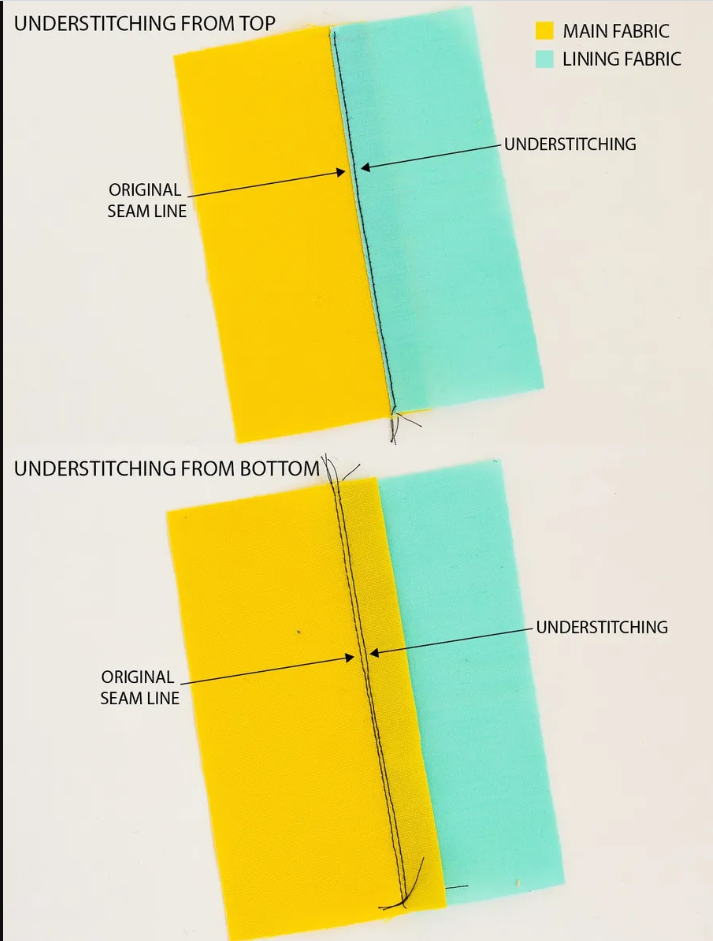If you’ve ever sewn something with a facing or lining as a beginner, you’ve probably had issues with it laying flat, even after pressing. Understitching can fix all of that. It is an oft overlooked technique by beginners, who think, like I thought, that it was unnecessary, or could easily be gotten away with. I learned the hard way that it is NOT something you can willfully ignore. The “hard way” in this case, was very carefully unpicking the entire neckline of a silk dress because it was unwearable until I understitched it. Ouch! The good news is that you don’t have to suffer. Let’s talk about how it’s done:

Understitching is a technique used to keep the lining of a garment from rolling to the outside or showing through to the right side of the garment. It involves stitching the lining to the seam allowances of the garment fabric, facing the lining fabric.
To understitch a lining, follow these steps:
- Sew the garment and lining fabrics together, right sides facing each other, along the seam line, leaving an opening for turning.
- Press the seam allowances open.
- With the lining facing up, fold the seam allowance of the lining under so that it covers the seam allowance of the garment fabric. Pin in place.
- Starting at one end of the seam, stitch through the lining and seam allowance only, about 1/8″ from the seam line, using a straight stitch.
- Continue stitching along the entire length of the seam.
- Press the lining and seam allowances to one side.
It’s important to note that understitching should only be done in areas where the lining needs to be secured to the garment fabric, such as along the neckline or armholes. It should not be done on areas where the lining needs to be able to move freely, such as the hemline.
When done correctly, understitching results in a professional-looking finish that helps the lining to stay in place and maintain the shape of the garment. It is a technique that is commonly used in the construction of tailored garments and can be done with both regular and invisible zippers.
It’s a simple process and the results are worth it, guys! So don’t skip it!

Leave a Reply
You must be logged in to post a comment.